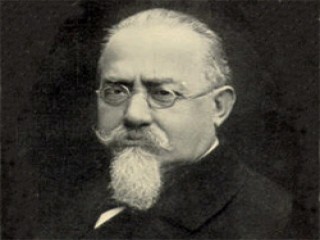
Cesare Lombroso biography
Date of birth : 1835-11-06
Date of death : 1909-10-19
Birthplace : Verona, Italy
Nationality : Italian
Category : Famous Figures
Last modified : 2011-01-31
Credited as : Criminologist, psychology and psychiatry ,
The Italian criminologist Cesare Lombroso devised the now-outmoded theory that criminality is determined by physiological traits. Called the father of modern criminology, he concentrated attention on the study of the individual offender.
Born in Verona on Nov. 6, 1835, Cesare Lombroso studied medicine at the universities of Pavia, Padua, Vienna, and Genoa. His interests in psychology and psychiatry merged with his study of the physiology and anatomy of the brain and ultimately led to his anthropometric analysis of criminals. While he was in charge of the insane at hospitals in Pavia, Pesaro, and Reggio Emilia (1863-1872), his interest in physiognomical characteristics of the mentally disturbed increased.
In 1876 Lombroso became professor of legal medicine and public hygiene at the University of Turin. That year he wrote his most important and influential work, L'uomo delinquente, which went through five editions in Italian and was published in various European languages but never in English. A deep and lasting friendship developed between Lombroso and his chief student, Enrico Ferri, who became Italy's leading criminologist.
Lombroso's general theory suggested that criminals are distinguished from noncriminals by multiple physical anomalies. He postulated that criminals represented a reversion to a primitive or subhuman type of man characterized by physical features reminiscent of apes, lower primates, and early man and to some extent preserved, he said, in modern "savages." The behavior of these biological "throwbacks" will inevitably be contrary to the rules and expectations of modern civilized society.
Through years of postmortem examinations and anthropometric studies of criminals, the insane, and normal individuals, Lombroso became convinced that the "born criminal" (reo nato, a term given by Ferri) could be anatomically identified by such items as a sloping forehead, ears of unusual size, asymmetry of the face, prognathism, excessive length of arms, asymmetry of the cranium, and other "physical stigmata." Specific criminals, such as thieves, rapists, and murderers, could be distinguished by specific characteristics, he believed. Lombroso also maintained that criminals had less sensibility to pain and touch; more acute sight; a lack of moral sense, including an absence of remorse; more vanity, impulsiveness, vindictiveness, and cruelty; and other manifestations, such as a special criminal argot and the excessive use of tattooing.
Besides the "born criminal, " Lombroso also described "criminaloids, " or occasional criminals, criminals by passion, moral imbeciles, and criminal epileptics. He recognized the diminished role of organic factors in many habitual offenders and referred to the delicate balance between predisposing factors (organic, genetic) and precipitating factors (environment, opportunity, poverty).
Lombroso's research methods were clinical and descriptive, with precise details of skull dimension and other measurements. But he did not enjoy the benefits of rigorous statistical comparisons of criminals and noncriminals. Adequate control groups, which he lacked, might have altered his general conclusions. Although he gave some recognition in his later years to psychological and sociological factors in the etiology of crime, he remained convinced of, and identified with, criminal anthropometry. He died in Turin on Oct. 19, 1909.
Lombroso's theories were influential throughout Europe, especially in schools of medicine, but not in the United States, where sociological studies of crime and the criminal predominated. His notions of physical differentiation between criminals and noncriminals were seriously challenged by Charles Goring (The English Convict, 1913), who made elaborate comparisons and found insignificant statistical differences.
















